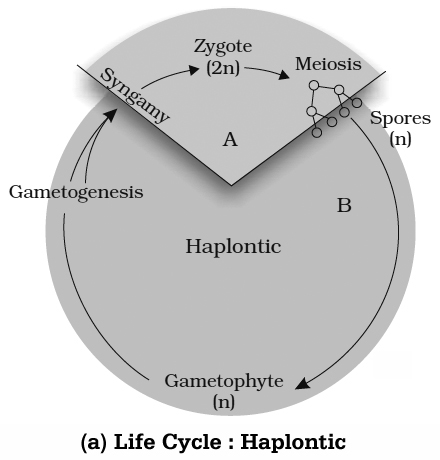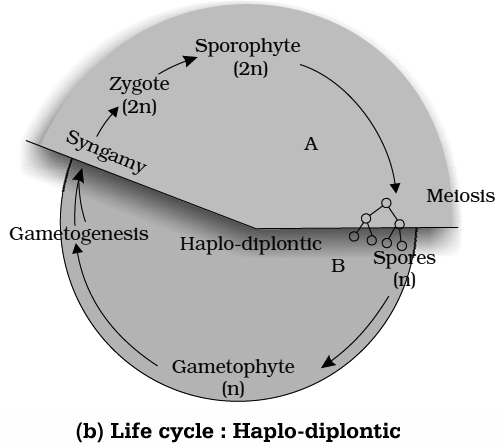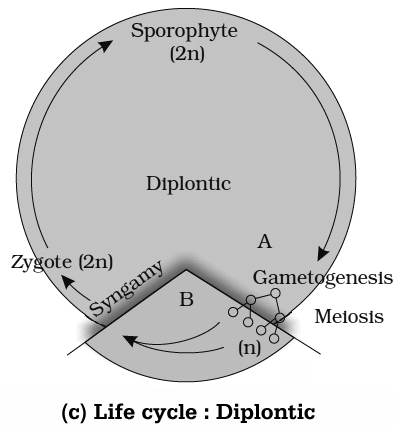- Books Name
- ACME SMART COACHING Biology Book
- Publication
- ACME SMART PUBLICATION
- Course
- CBSE Class 11
- Subject
- Biology
Plant Life Cycles and Alternation of Generations
Life cycle of a plant is called alternation of generations in plants, both haploid and diploid cells can divide by mitosis.
This ability leads to the formation of different plant bodies -haploid gamete producing plant (gametophyte) and diploid spore producing plant (sporophyte).
The haploid plant body produce, gametes by mitosis. Following fertilization, the zygote may divide by mitosis to produce sporophyte or may divide by meiosis to produce haploid spores.
Haploid spores in turn divide mitotically to produce gametophyte. Thus, during the life cycle of a sexually reproducing plant there occurs an alternation of generations between the haploid and diploid phases. Syngamy and meiosis seems to be instrumental for this event.

There are three chief patterns of life cycle. They fundamentally differ in the duration of the haploid and diploid phases. These are:
(i) Haplontic : It is characterized by the dominance of haplophase. The plant body is gametophyte and independent. The sporophyte is dependent on gametophyte, and is not a free living body. The major part of life is dominated by gametophyte, e.g., majority of green algae viz. Chlamydomonas, Ulothrix, Spirogyra etc.
(ii) Diplo-haplontic or Haplo diplontic: It is characterized by the existence of both sporophyte as well as gametophyte. Both of them are photosynthetic multicelled bodies and often free living with two nearly equal phases -the diplophase and haplophase. If sporophytes and gametophytes are morphologically different then the life cycle is termed as Diplo-haplontic-heteromorphic, e.g., all pteridophytes; all bryophytes some brown algae viz., Laminaria and other Kelps. If the two phases are morphologically identical, then life cycle is termed as Diplo-haplontic¬isomorphic, e.g., green algae viz., Ulva and Cladophora; brown algae, such as Ectocarpus

(iii) Diplontic : It is characterized by the dominance of diplophase. The plant body is sporophyte which is independent and free, living. The gametophytes are extremely reduced and are dependent physically as well as nutritionally on the sporophyte. The major part of the life is enjoyed by the sporophyte, e.g., all gymnosperms and angiosperms; Diatoms; some brown algae, viz., Fucus and Sargassum.


 Maria Habib
Maria Habib
